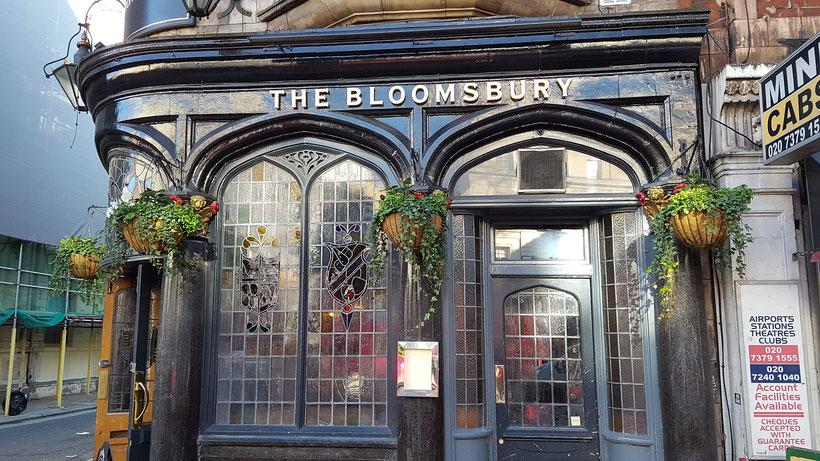
Lauren McRae is Head of Content, language coach & private instructor at '69English.
Have you ever been to London? You are likely to have noticed that it is a very multicultural and diverse place with a multitude of languages. However, did you know that even amongst English speakers in London there is a wide variety of accents and dialects? These range from the now rarer Received Pronunciation (RP) on one end of the spectrum to Cockney on the other, which was made famous by Audrey Hepburn in My Fair Lady and Dick Van Dyke in Mary Poppins. However, you may not have heard of Estuary English, which lies in the middle ground, or Multicultural London English (MLE), which is very much on the rise and which has spread to other areas of the UK. In this article we will look at all these dialects and examine their usage and impact on London life.
1. BBC English
We will examine RP first, which you may know as ‘BBC English’ or the ‘Queen’s English’. This is type of English which is spoken by the Royal Family and by the upper class section of the population and which could be labelled as being ‘posh’. This is the accent that is given to you in a dictionary and used to be very common on TV and radio. However, the problem with this accent is that it can come across as being very snobbish and formal. Not many people speak in this way but you will still find it in the upper echelons of London society.
2. Cockney English
If we now look at Cockney English, this provides a complete contrast to RP. Cockney hails from the East End of London. Perhaps you are familiar with the now famous Cockney rhyming slang, whereby words are replaced with other words or phrases that rhyme with them. Often the actual word that rhymes is missed out, which can lead to confusion for people who don’t speak it. Examples of Cockney rhyming slang include apples and pears (stairs), butcher’s hook (look) and china plate (mate=friend).
Another component of Cockney is saying words backwards such as yob (boy). This has now entered in common English usage as a word denoting a hooligan. Other key aspects of Cockney include missing out ‘h’ in words, the glottal stop instead of using a ‘t’ sound and someone speaking Cockney would also do what is known as ‘th-fronting’ (for example, the ‘th’ in words such as ‘three’ would be pronounced as f= ‘free’ and the ‘th’ in mother would be pronounced as a ‘v’.
3. Estuary English
As for Estuary English, the term derives from English spoken around the River Thames and the term was created by a teacher called David Rosewarne in 1984. The dialect has aspects of both RP and Cockney as I will now explain. It follows standard grammar and usage (unlike Cockney) but as in Cockney, with Estuary English you will hear the letter T dropped, (but not all the time) and also another shared characteristic between the two is the pronunciation of the ‘l’ sound as almost a ‘w’ (football= ‘foo’baw’) . As for vowels, the sounds tend to follow those of RP. However, there is no ‘h’ dropping or ‘th-fronting’ as in Cockney.
4. Multicultural London English
Perhaps the most fascinating dialect for me is MLE, a new variety of English, which has emerged from multicultural areas of London such as Hackney. It has a number of linguistic characteristics; for example, a MLE speaker might use the format ‘This is+ speaker’ and say ‘this is my mum, “do your homework now” or use the word ‘innit’ (isn’t it) as a discourse marker to indicate that the noun that comes before it in a sentence is important and will be elaborated upon in what is said next.
As for the rhythm, it is can be deemed to be more staccato or ‘syllable-timed’ and it has vocabulary borrowed from Jamaican English, for example ‘whagwan’ ‘what’s up’. The media has referred to MLE as ‘Jafaican’ and amongst many prominent members of society, including in parliament, it has been condemned and seems to have been misunderstood rather than embraced as an example of London’s great ethnic diversity.
London is a melting pot!
In conclusion, London’s melting pot of cultures and languages has had a highly significant influence on the language spoken in the city. Language has evolved and the polar opposites of RP and Cockney are no longer as common as they once were. Particularly amongst the multicultural less wealthy areas of the city, MLE is prevalent and has so much influence particularly amongst young people in urban areas that it has gained popularity in other areas of the UK. This evolution of the language is a good thing, even if it may take you time to tune your ear to some of the sounds of the different dialects.
Now you know some of the key features of each dialect, you can have more confidence in identifying and understanding them. Just another reason to explore the Capital, and get to know some real Londoners!

Escribir comentario